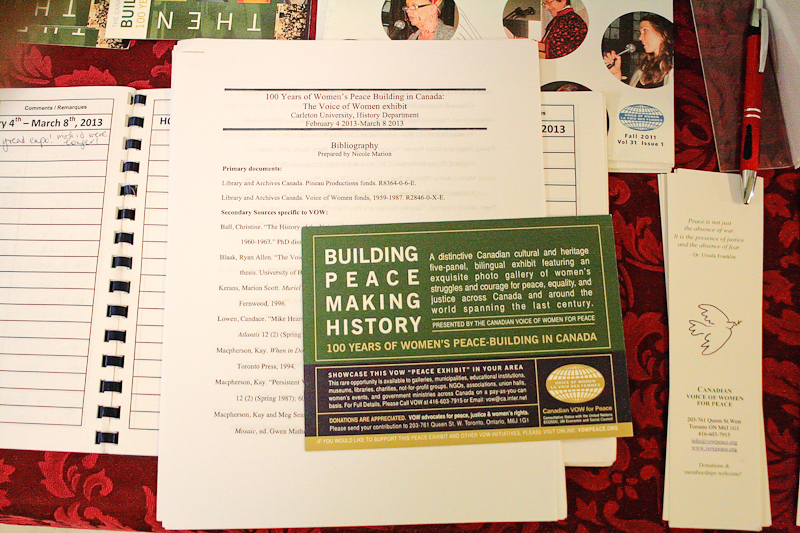
The Canadian Voice of Women for Peace put on a photography exhibit with the history department and the Carleton University Art Gallery to help make the topic of women’s involvement with the peace movement better known.
The history department was a great place to put the exhibit because many history students have a strong interest in the history of women’s gender and sexuality, Carleton history professor Dominique Marshall said.
“These days when commemorations of war are so massive, the place of peace and the peace movement tends to fade. The history of peace is . . . harder to celebrate because there’s no date like celebrating the War of 1812 or World War one,” Marshall said.
“Wars are also the times of pacifists . . . and because movement for peace in Canada in the ’60s was mainly led by women, they were really the only main force in the ’60s.”
The exhibition is a very small thing and is located in the corridors of the school, but more information has been posted online, Marshall said.
Marshall said the exhibit shows a direct link from peace to Canada’s history.
One of the starting points was when scientists and chemists attracted the attention of women all over Canada due to radiation problems, and had mothers send teeth of their babies to check for radiation.
This kind of action showed the war had come home, Marshall said. These nuclear testings are influencing and touching Canadians.
“So with the beginning of research in radiation in Canada there are now many students who are involved in research in environmental problems, problems of sustainable development, the role of women in the agriculture, and the economy of the third world, and these are directly related to what these people were doing 50 years ago.”
Sandra Ruch, a co-ordinator at Canadian Voice of Women for Peace (VOW) said she also thinks the exhibit has modern implications.
“We think that the history of women as activists and our role as women in history is very important. We don’t want that to get lost in the story – in Canada’s story – and in the political story. We think it’s incredibly important that women’s voices are always heard.”
Ruch said the exhibit speaks to just how important the role of women is.





